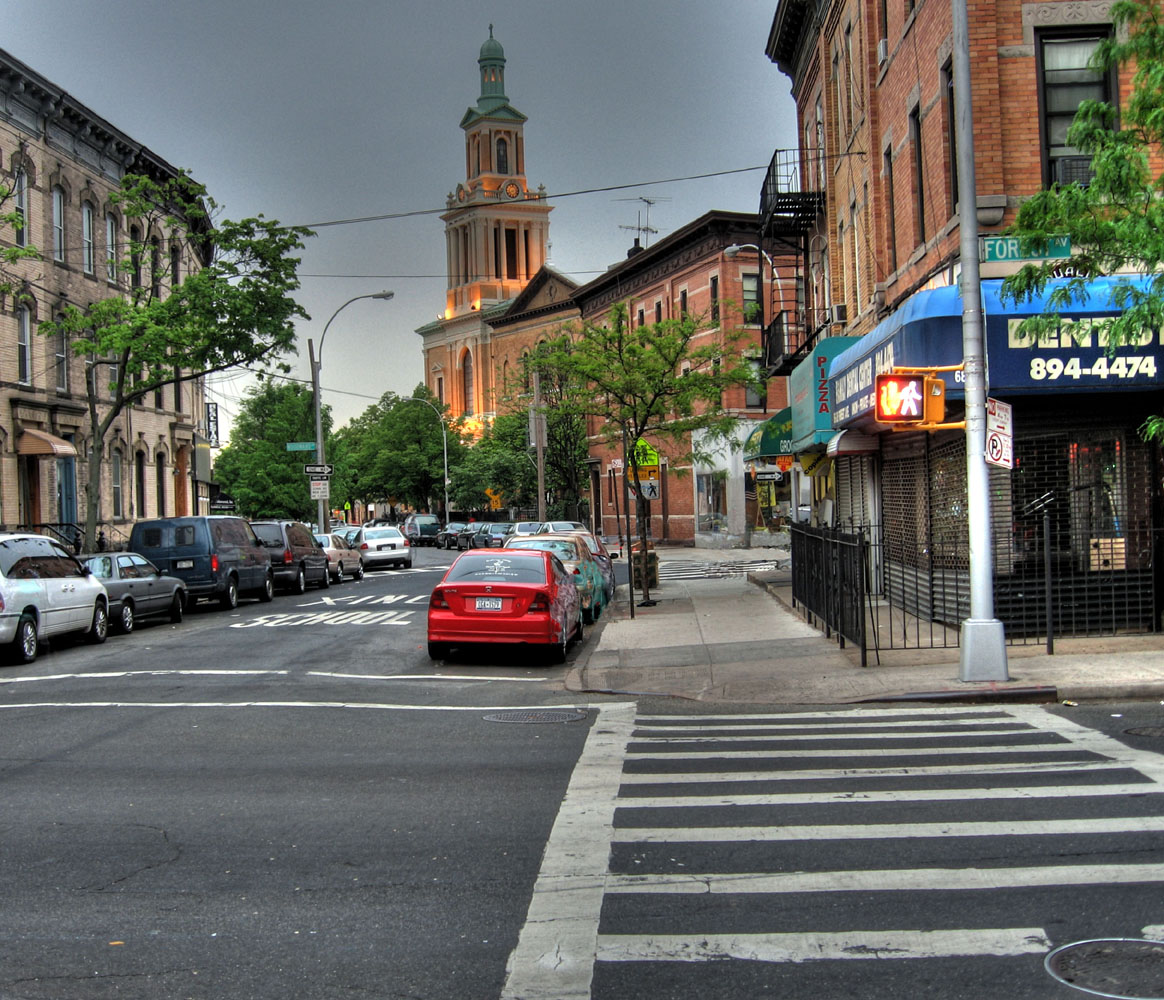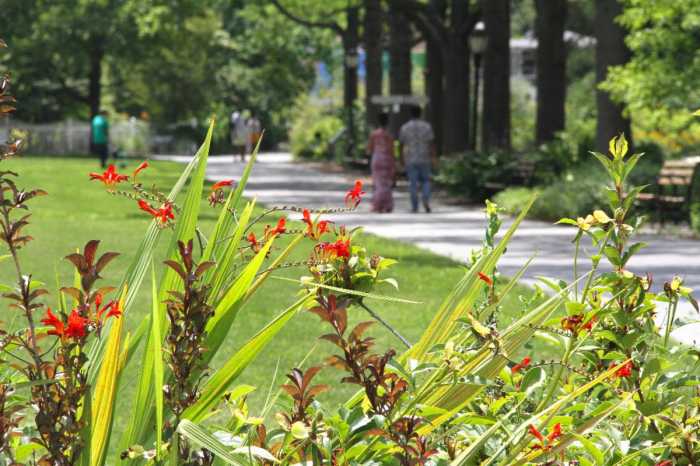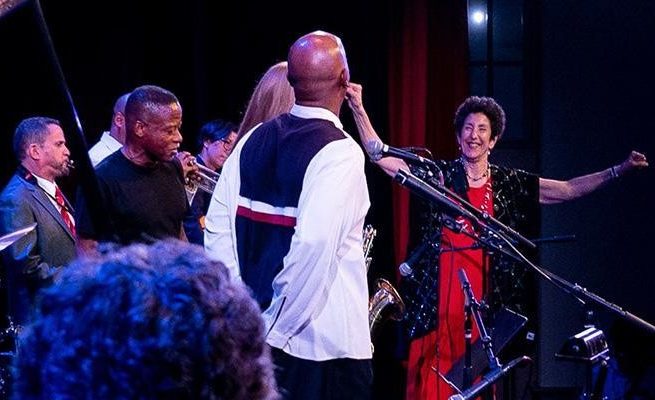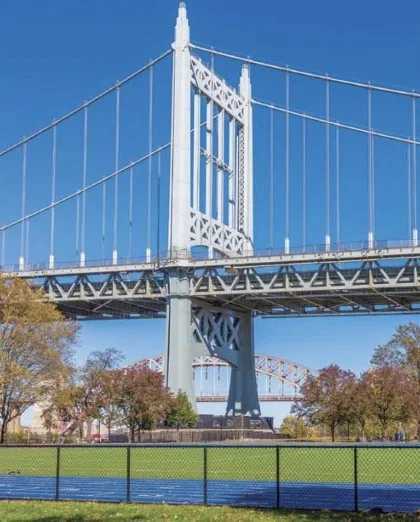To the annoyance of students (but to the delight of parents), schools will be open once again in just a few weeks. We thought this would be the perfect time to share with you a very interesting letter — and a box full of memorabilia — from Louise Kuebler (nee Liefke) of Glendale, who recently turned 90.
She shares with us some details about her life and her education at two of Ridgewood’s public schools. She writes:
I was born in Brooklyn in the spring of 1926. When my parents came to America in 1924, they had to have a sponsor waiting for them at the ship with a certification that there was a place for them to live. That sponsor was my aunt, my mother’s sister. She became ill shortly after they arrived and passed away in Lenox Hill Hospital on July 3, 1924.
Since there were no available burial sites in Manhattan, my parents came to Ridgewood and bought a plot at Linden Hill Cemetery on Onderdonk Avenue near Grover Cleveland High School. My aunt’s funeral in July of 1924 cost $256, which included $50 for the new plot.
When it was time for me to go to school, we moved to a cold water flat over a candy store on the corner of Seneca Avenue and Centre Street, across the street from P.S. 77. There was no central heating! A big coal stove in the kitchen was used for cooking and baking as well. I was thrilled to be so close to school.
I graduated in January of 1940. My report card not only marked my academic achievements, but there was a report on deportment and social skills: S for satisfactory, NI for needs improvement and U for unsatisfactory.
During a six-month term, a report card was sent home with separate marks for each 1 1/2 months. This had to be signed by my father.
In those days, you had to go to the high school nearest your home. Mine was Grover Cleveland High School. I graduated from there in January of 1944. In addition to the diploma, there was a certificate given separately which listed the subjects I had taken and certified that I was eligible to go to college. There were no SATs and other tests then.
The commencement took place in the auditorium of Grover Cleveland. There was still a war going on. At the top of the extensive program, there was a note of what to do and where to go in case of an air raid. Many of our teachers were air raid wardens and they had arm bands and flashlights.
I’ve spent over 80 years of my life in Ridgewood and Glendale. I got to travel a great deal, but it was always nice to come home!
Thank you for listening to me! I’ve had a wonderful life and I’m still content today. Can still walk reasonably well. I cook and do laundry, but I’m very, very slow!
We thank Ms. Kuebler for her wonderful letter and contributions, and we share with you some of what she provided.
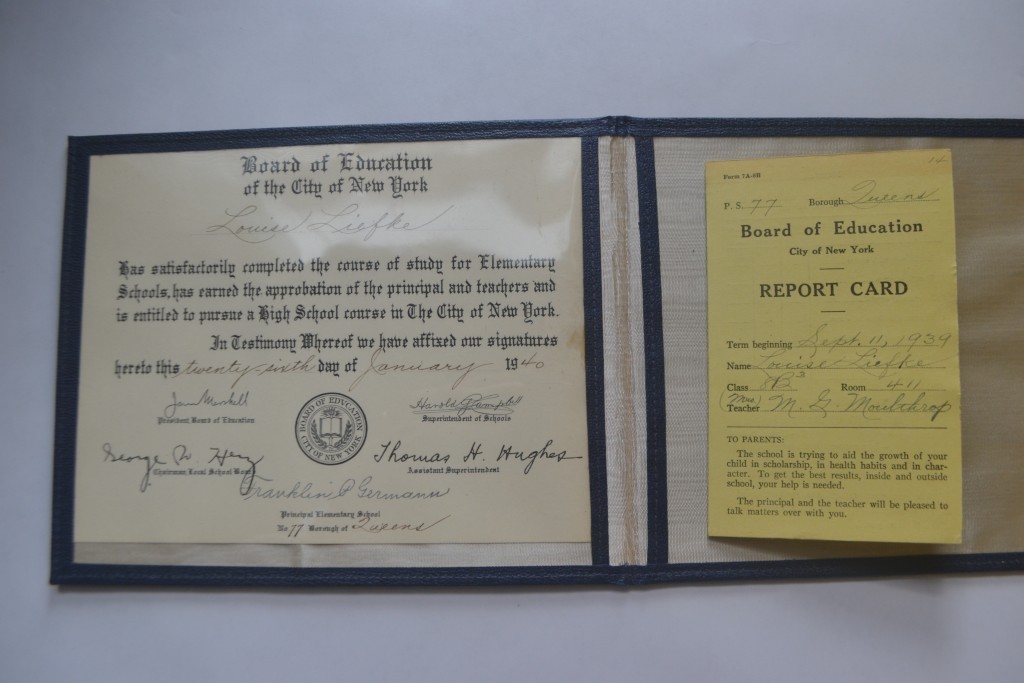
One of her artifacts was her diploma from P.S. 77 (now I.S. 77) in Ridgewood. It states that Louise Liefke “has satisfactorily completed the course of study for elementary schools, has earned the approbation of the principal and teachers and is entitled to pursue a high school course in The City of New York.”
Signed on January 26, 1940, the diploma includes the signatures of James Marshall, president of the Board of Education; Harold J. Campbell, superintendent of schools; George W. Herz, chairman of the local school board; Thomas H. Hughes, assistant superintendent; and Franklin P. Germann, principal of P.S. 77.
The leather-bound diploma also a Board of Education report card for Mrs. M.G. Moulthrop, for the term that began on September 11, 1939. That was 10 days after the start of World War II in Europe, which the U.S. would enter two years later following the Japanese attack of Pearl Harbor on December 7, 1941.
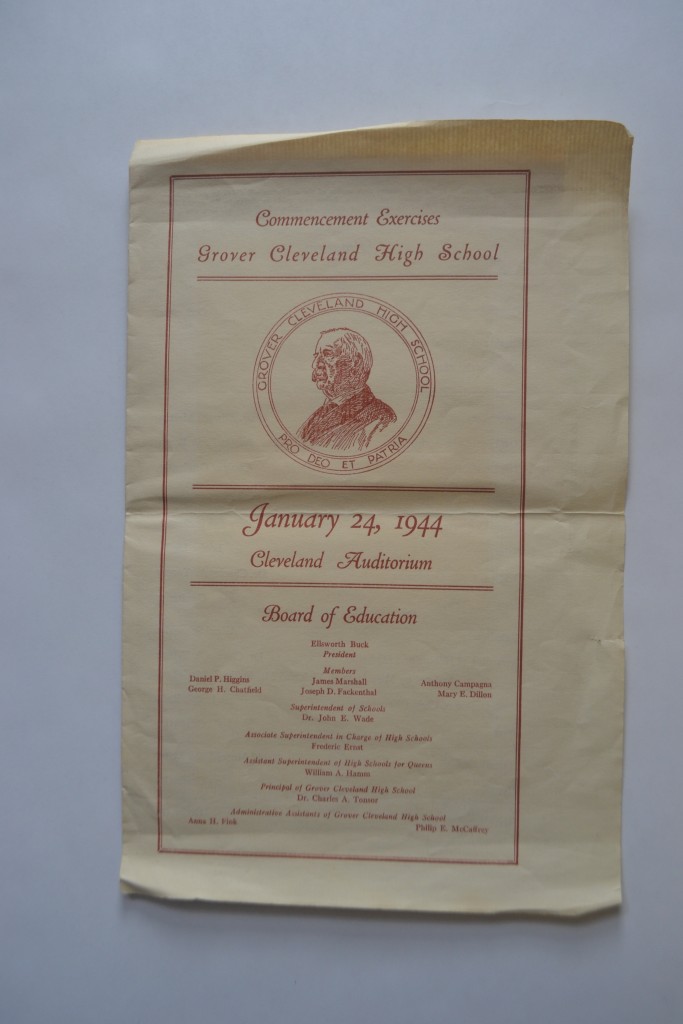
The commencement program from her Louise’s high school graduation, as she mentioned, included the school seal: a portrait of Grover Cleveland, the nation’s 22nd and 24th presidents (remember, he served two non-consecutive terms). surrounded by the school name and Latin motto Pro Deo et patria (for God and country).
As mentioned, the program included instructions for audience members “in the event of an air raid warning … to leave as instructed by the school post warden.” Guests were to “follow your guide in silence to the second floor and line up along the walls of the second floor corridor, as instructed.”
One notable entry in the program noted that Dr. Charles A. Tonsor would deliver the address to the graduates. Tonsor was the first principal of Grover Cleveland High School, which opened in 1931. He was a beloved member of the Greater Ridgewood area and would become a member of the Ridgewood Savings Bank’s board of directors. Tonsor Street, which runs adjacent to the school, is named for him.
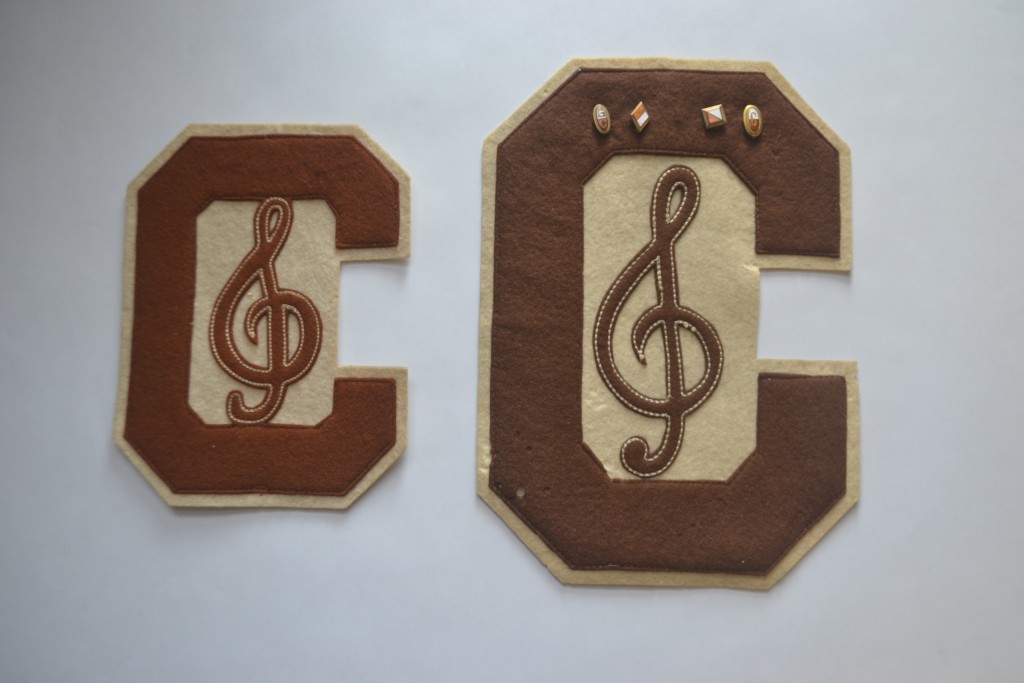
Ms. Kuebler didn’t mention it in her letter, but she also was a member of the Grover Cleveland Marching Band. She enclosed two patches that she received for her play; two brown, square Cs, one large, one small, with a treble clef in the middle. The larger C, which she received in her senior year, includes Arista pins.
We wonder if any other graduates of our local schools, especially our Baby Boomer readers, have some memories they’d like to share of their school days in Ridgewood, Glendale, Maspeth and Middle Village. If you have a story to share, we’d love to hear it!

